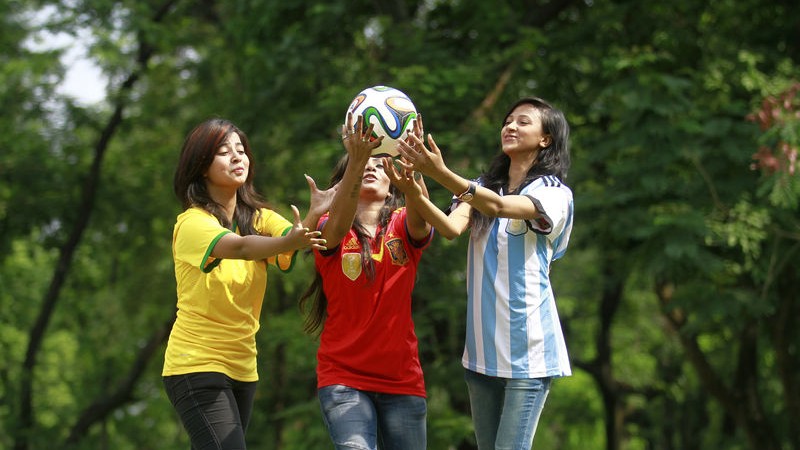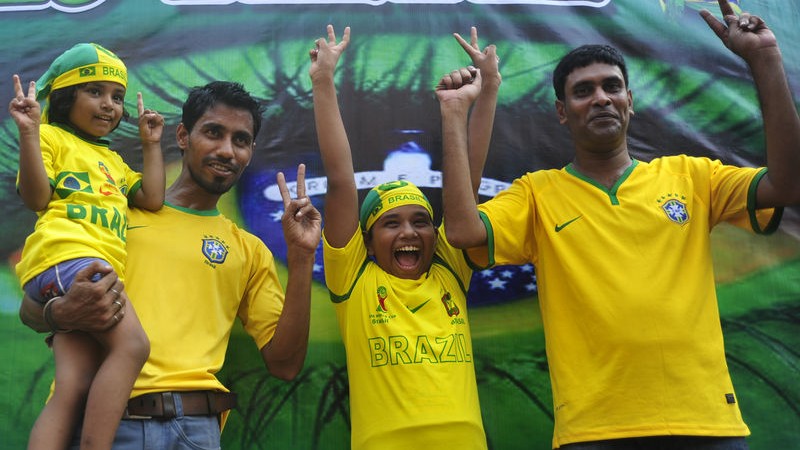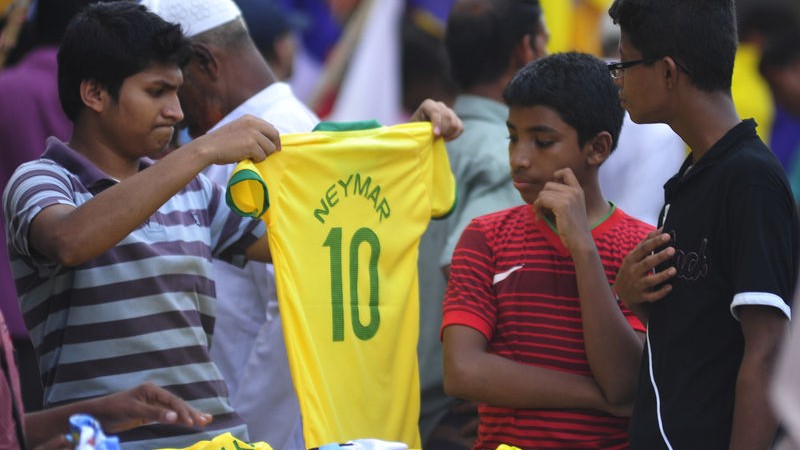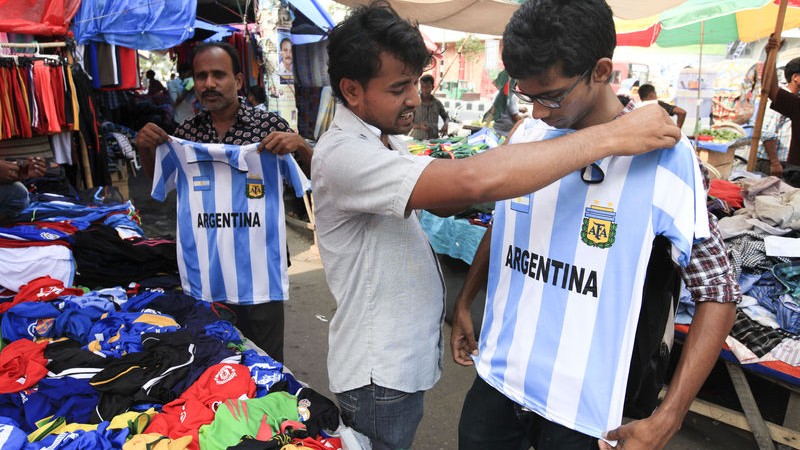 |
| 80% of the workforce in readymade garments sector are women. Image by Shafiqul Alam. Copyright Demotix (22/6/2014) |
Garment manufacturers, already the country's largest export earners, have earned at least 500 million US dollars in export orders to sew fan World Cup jerseys of most of the players of the 16 participating teams, including Argentina, Brazil, Italy, Iran, France, England, Switzerland, Belgium, Chili and Germany. The sales are expected to boost the industry's growth.
Bangladesh has also manufactured the Brazilian national team's jerseys. The Brazilian Football Confederation (CBF) decided that "Made in Bangladesh" would be written at the lower part of the jersey to pay tribute to the victims of 2013 Rana Plaza collapse that killed more than 1,100 people and Tazreen Garments fire which killed more than a 100 people, according to media reports.
Karima Haque at football news site Side Tackle congratulated Bangladesh for its work:
We [...] commend and salute the thousands of pairs of hands that has made this praiseworthy feat possible. They have, and they will, make Bangladesh proud in the foreseeable future.Tanvir Ahmed, a Liverpool Football Club fan in Bangladesh's capital Dhaka, tweeted:
I really feel proud when I realize all Brazil jersey are made in #Bangladesh this year. Really proud!!!
— Tanvir Rahman (@pritomtanvir) June 12, 2014
The World Cup apparel is not only popular in countries participating in the tournament, but also at home in Bangladesh, a country of about 160 million people. Football is a favorite sport here. Official team jerseys from Nike, Adidas and Puma are available but costly, so many fans prefer to buy unofficial jerseys from roadside stands or shops. |
| Football fans in Dhaka seen wearing their favorite team jerseys. Images by Reaz Sumon. Copyright Demotix (05/06/2014) |
 |
| Football fans on the Dhaka University campus. Image by Firoz Ahmed. Copyright Demotix (12/06/2014) |
 |
| Bangladeshi football fans are buying flags and jerseys of the countries they support. Image by Firoz Ahmed. Copyright Demotix (10/06/2014). |
 |
| Football fans buy jerseys of their favorite teams Image by Md. Asaduzzaman Pramanik. Copyright Demotix (19/5/2014) |
We are exporting Polo brand football shirts at 9 US dollars a piece. Usually the price of this merchandise is 6.30-7.00 US dollars. But due to high demand for the jerseys, the manufacturers supplying them are getting an extra 2 dollars. So our foreign currency income has increased. We are profiting both ways: 1) we can be involved in the World Cup and 2) earn increased profit margins. This also boosts Bangladesh's reputation.
























0 comments:
Post a Comment